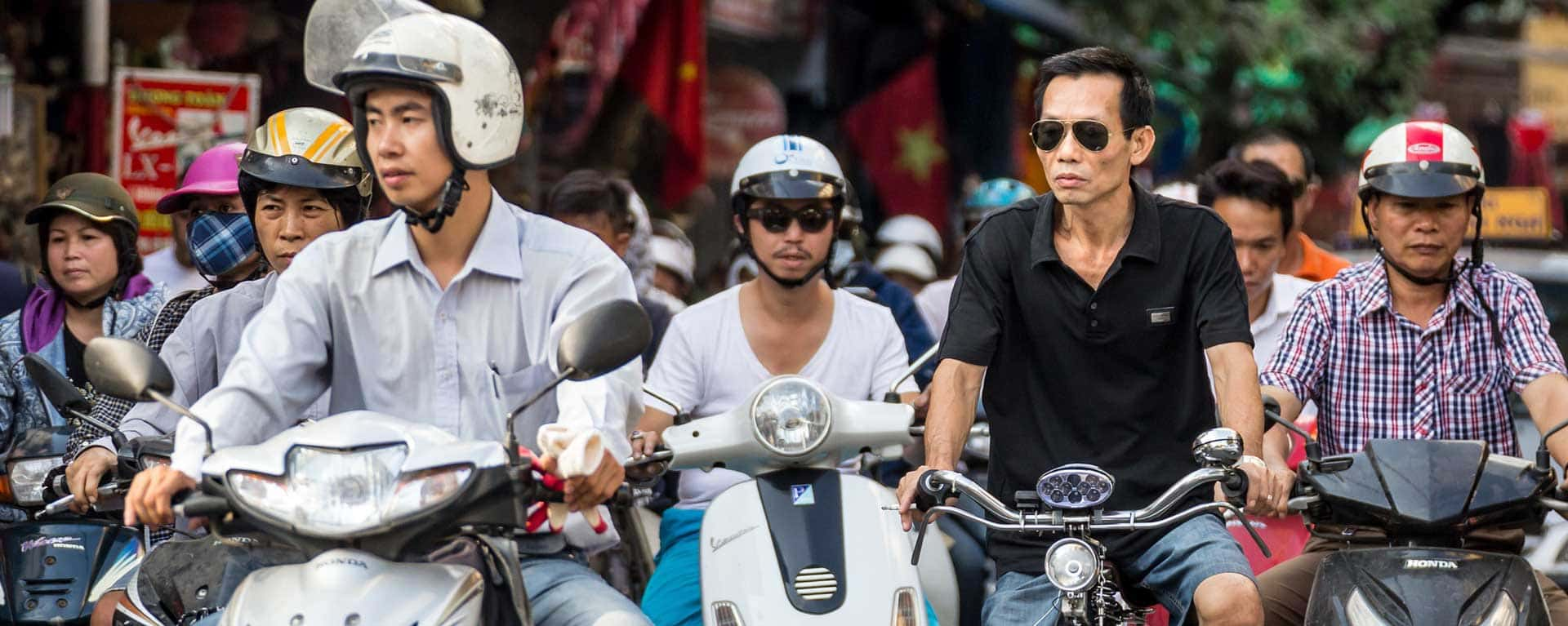Transportation in Vietnam
Walk
One of the best ways to visit a city is on foot. A stroll through the streets of downtown Hanoi or Saigon is a great opportunity for photographers or street food buffs. However, this can be a bit infuriating when scooters are parked on the sidewalk and from time to time you have to get off the road.
Crossing the road in Vietnam can seem disturbing but at the same time fun. Remember that motorcycles try to anticipate your movements to avoid you. Keep a slow pace but continue to move forward (do not stand in the middle of the road or back), raise your arms so that motorcyclists know you are crossing the street. Beware of trucks and buses.
Cyclo
Cyclos are also an interesting way to visit the city. But you have to negotiate a price in advance, about 100,000 VND per hour, and make sure you pay the exact amount.
Scooter
Officially, you drive on the right side of the road, although in practice this is not always the case. Check with your travel insurance that you are well covered in case of accident.
To rent a motorbike, you will need to provide a passport, sign a rental agreement or pay in advance. Longer rental periods may require you to leave your passport or cash deposit equal to the market value of the motorcycle. Make sure your rental vehicle is in working order and that the brakes, headlights, etc. work properly. It is wise to park your motorcycle in a guarded car park to reduce the risk of theft. Just be sure to keep your parking ticket: if you lose it, you will need to contact your rental agency. When driving, always wear a helmet (which is required by law), avoid jewels and miniskirts, and securely fasten your bag or put it under the seat to protect it from thieves.
Xe om (Motorcycle taxi)
Most xe om drivers can be found sitting (sometimes asleep) on their vehicle in street corners. To pronounce street names in Vietnamese can be difficult, so indicate your destination on a map or write it. Make sure you agree on a price beforehand.
For more convenient and less expensive travel, try the Grab, GoViet and Be apps that are similar to Uber.

City bus service
Buses are also an option for getting around the city in air-conditioned comfort (in newer models). Most of the main streets are accessible via an inexpensive bus route, (VND 7,000 for one trip), paid to a "driver assistant" on the bus. In case of heavy traffic, buses can be faster because they have an informal right of way in the streets. Be sure to wave when your bus arrives, otherwise they could simply pass without stopping.
Taxis
Taxis are numerous and cheap compared to some neighboring countries. In general, drivers speak very little English. It is therefore worth noting your destination before. For quality assurance, choose large taxi companies such as Hanoi Taxi, Mai Linh or Vinasun.
Apps like Grab offer cheaper fares and more polite drivers than normal taxis. Communication (by message) will be easier and you can follow the route of the trip on your mobile.
Bus service between cities
Long distance bus services connect most cities and tickets can be purchased at major bus stations. Many agencies use sleeper buses with reclining seats. Some of these buses may leave lights on for most of the night, so bring an eye mask.
Many travel agencies offer several tours called Open Tours, which crisscross the country. For a low price, you can choose to stop in a destination and stay as long as you want. When you decide to take the bus, go to the office of this agency.
Trains
The north-south railway line known as the Reunification Train (Tau Thong Nhat) is an excellent way to see the countryside, especially because the journey is much less chaotic than road traffic on the national road 1. The train system is slowly modernizing with more comfortable trains. Sleeper cars are available for long journeys.
Private companies travel from Hanoi to Sapa or from Ho Chi Minh City to Phan Thiet and Nha Trang. The fare is more expensive, but more modern and comfortable than the normal train. You can check the schedule on baolau.com.
Train tickets can be purchased online or directly at the train station. Ticket classes include the rigid seat and soft seat, as well as stiff berths and soft berths for overnight trips. A drink and a light snack are usually included in the ticket price. Many train routes have affordable dining cars and packed lunches.
Trains usually leave on time. For a detailed schedule of departure and arrival times, fees and availability, visit seat61.com/vietnam.htm.
Plane
International flights: The two main airports of entry are Noi Bai (HAN) in Hanoi and Tan Son Nhat (SGN) in Ho Chi Minh, followed by Danang (DAD).



